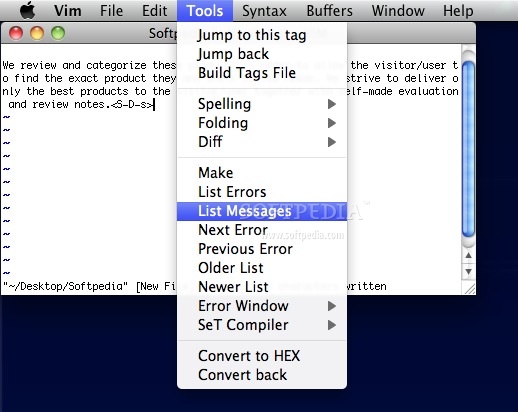

- #Macvim startup settings font mac os x#
- #Macvim startup settings font install#
- #Macvim startup settings font download#
If you are using Word 2016 for Mac, go to /Users/ username/Library/Group Containers/UBF8T346G9. In the Open dialog box, browse to the folder that contains the Normal.dotm file. If you open Normal.dotm from the Finder, Word will create a new blank document based on the template. To make changes to Normal.dotm, you must open the file from Word. You can customize the Normal template and change default settings for many aspects of a document, such as text formatting, paragraph formatting, document formatting, styles, text, pictures, AutoText entries, and keyboard shortcuts. On the Format menu, click Document, and then click the Layout tab.Ĭhange other default settings in the Normal template For example, the layout attributes for new blank documents are based on the Normal template. On the Format menu, click Document, and then click the Margins tab.Ĭhanging the default layout in any template means that the section breaks, headers and footers, and other layout attributes are used in every new document that is based on that template. For example, the margins for new blank documents are based on the Normal template. Make any changes that you want, and then click Default.Ĭhanging the default margins in any template means that the margin settings are used in every new document that is based on that template. I hope u all see the differences in the screenshot.
#Macvim startup settings font mac os x#
All this is on Mac OS X Mavericks with retina display. MacVim & sublime text is much thicker whereas TextMate is slicker (and sophisticated. The objective is to compare the font thickness. On the Format menu, click Font, and then click the Advanced tab. Leftmost is sublime v3, middle is MacVim and rightmost is TextMate. Open the template or a document based on the template whose default settings you want to change. For example, the character spacing for new blank documents is based on the Normal template.

Changing the default font also changes the Normal style, which affects any other style that is built on the Normal style.Ĭhanging the default character spacing in any template means that the settings for scale, spacing, position, kerning, and other typographic features are used in every new document that is based on that template. I do not see precise specification for that, though it is mentioned in the :help win32-faq.Note: Most of the styles in Word are based on the Normal style.

VIM Windows syntax is :set guifont=Consolas:h10. After :set guifont=* you can always check the proper syntax for the font using :set guifont?. (But if you do no use console VIM then you can simply forget about the. IOW, all VIM general settings should be kept in. After that, if GUI is activated, it also reads the. vimrc, which on Windows is either $HOME\_gvimrc or $VIM\_gvimrc.Ĭheck the :help. vimrc file like belowįor GUI specific settings use the.
#Macvim startup settings font install#
you probably not install MacVim or you didnt make mvim as default command. This should display to you the string that Vim has set this option to. It WILL NOT overwrite your /.vimrc, /.vim/ files, Dont worry about it.
#Macvim startup settings font download#
Try setting your font from the menu and then typing :set guifont? Welcome to MyFonts, the 1 place to download great font-face webfonts and desktop fonts: classics (Baskerville, Futura, Garamond) alongside hot new fonts (Brice, Moneta,Novera). I use the following (Uses Consolas size 11 on Windows, Menlo Regular size 14 on Mac OS X and Inconsolata size 12 everywhere else): if has("gui_running")Įdit: And while you're at it, you could take a look at Coding Horror's Programming Fonts blog post.


 0 kommentar(er)
0 kommentar(er)
